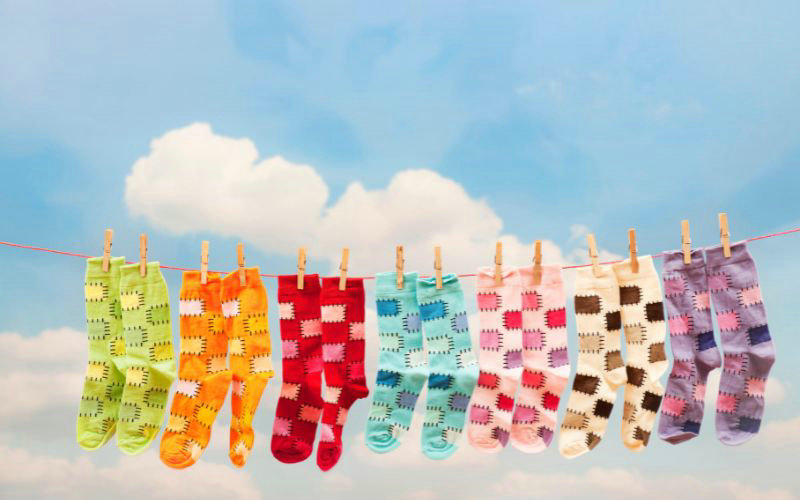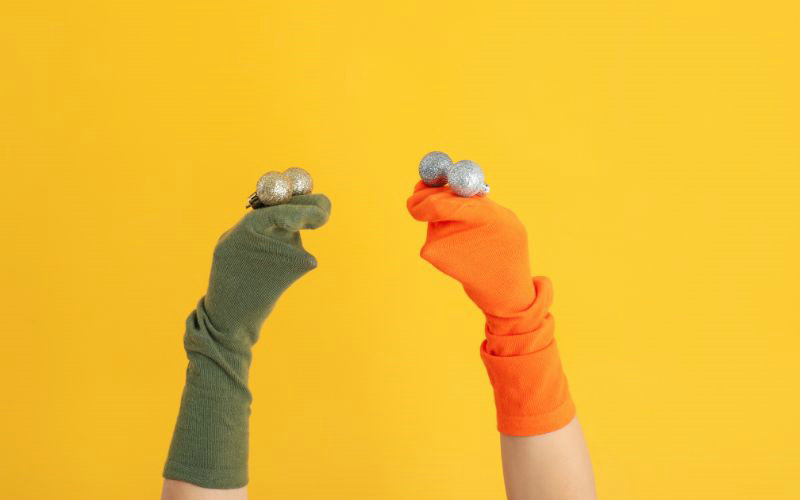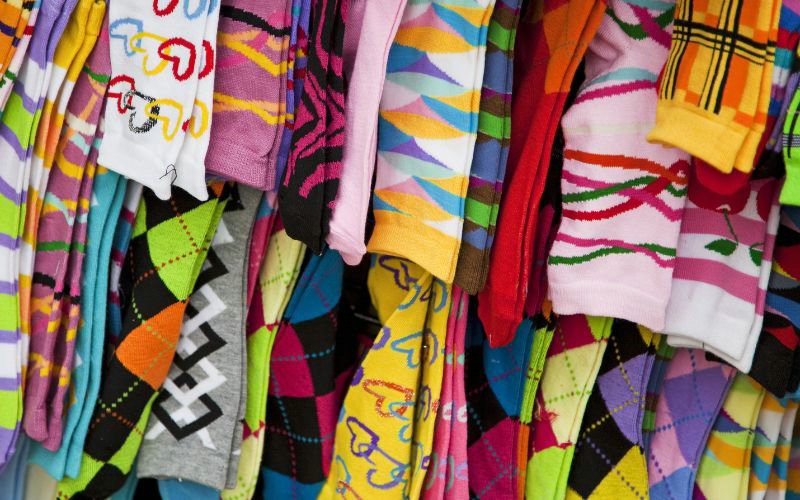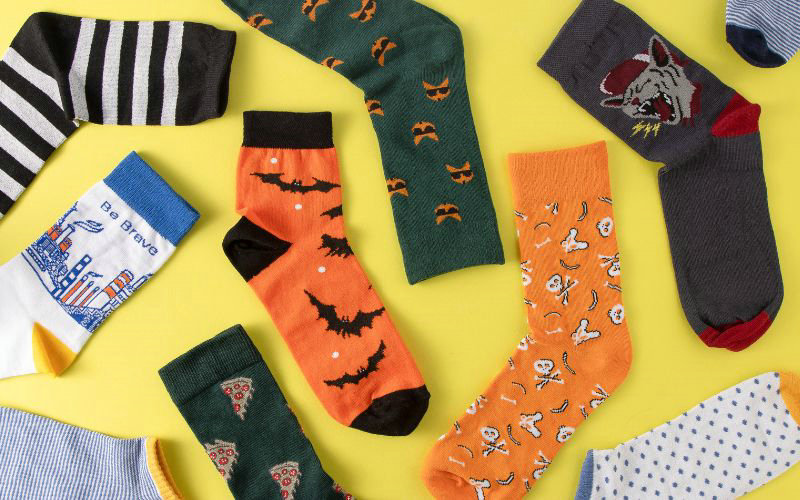
Key Takeaways
- History: Socks were introduced as far back as the 8th century BC in Ancient Greece, where they were made from matted animal hair.
- Materials: Early socks utilized materials like animal hair and leather. Through time, textiles evolved, and socks were later made from silk, wool, cotton, and various synthetic materials including nylon, polyester, and acrylic.
- Innovations: Romans advanced the craft of socks by sewing textiles together to form fitted pieces known as “udones” from woven fabrics.
- Development: Over time, socks evolved into more comfortable and durable forms through the use of knit techniques and the introduction of materials like spandex for more elastic effects.
- Technological Advances: The invention of the knitting machine in the 16th century led to the mass production of socks, significantly improving accessibility and variety.
- Modern Socks: Today, you have a myriad of options like moisture-wicking fabrics for sports, luxurious cashmere for warmth, and sustainable materials like bamboo.
- Variety: Socks now come in countless varieties, from functional athletic socks to sophisticated stockings, accommodating a range of needs and preferences.
Material Evolution Of Socks over Time
| Century | Material Evolution |
| 8th BC | Matted animal hair |
| 2nd AD | Leather, silk, woolen socks |
| Modern | Cotton, silk, nylon, spandex, bamboo, cashmere, merino wool |
Remember, the socks you wear today have a storied past, rooted in necessity and evolved through innovation in materials and technology.
The Origin of Socks

Common as a pair of socks seems, different types and styles of socks have experienced different amazing adventures, originating in ancient civilizations, adapting through Roman innovations, and evolving into the footwear accompaniment you know today.
Ancient Roots
Socks were first conceived as early as the 8th century BC in Ancient Greece. This style of socks called piloi, were not the socks you might be familiar with; instead, they were crafted from matted animal hair or skins. These precursors to our modern crazy socks offered warmth and protection, setting the foundation for future developments in sock-making.
The Roman Influence
By the 2nd century AD, the Romans made their mark on the history of socks by substituting the Greek piloi with a variant called udones. These were typically made from woven fabrics. Unlike the Greeks, the Romans also created socks known as soccus for the lighter, indoor alternative to heavy shoes. Their contribution marked a shift from the use of rough animal skins and grass to more comfortable, fabric-based socks. In addition, an Egyptian tomb uncovered socks dating from 300-500 AD, featuring a split-toe design to be worn with sandals, reflecting the regional adaptations of this essential garment.
Development Through the Ages
Throughout history, the evolution of invented sock history has been marked by significant innovations, particularly during the Middle Ages and the Industrial Revolution. You’ll discover how medieval advancements paved the way for more comfort and variety, and how the invention of the knitting machine revolutionized sock production.
Earlier Ages
- In 5th century Europe, socks (called puttees) were usually only worn by “holy” people to symbolize purity.
- Ancient Greeks and Romans wore socks for functional purposes to keep feet warm, while in 5th century Europe, they became a status symbol worn by holy people.
- Some modern Catholic-themed sock brands market socks with religious imagery as gifts for occasions like communions and confirmations. This suggests an association between socks and holiness in the Catholic tradition.
Medieval Innovations
In the Middle Ages(500-1500 AD), socks often referred to as ‘hose’, were handmade from materials like wool and cotton. This period saw a surge in the use of bright colors and intricate patterns, with wool becoming the primary material due to its availability and warmth. The technique of knitting, which had been refined over time, greatly increased both the durability and fitness of socks. This was a time when your status could be reflected in the socks you wore, with the most luxurious being reserved for society’s elite.
The Industrial Revolution
The pivotal point in sock production came with the Industrial Revolution. William Lee’s invention of the knitting machine in 1589 was groundbreaking, but initially, it did not receive the patent he sought. Nevertheless, this innovation greatly accelerated the production of socks, making them more accessible to the general population. Socks began to be machine-knit, drastically reducing the time and effort required to produce them. Furthermore, the adoption of cotton as a type of sock material became widespread, providing a softer and lighter alternative to wool.
Materials and Methods

From Animal Hair to Synthetic Fibers
Initially, socks were manufactured from animal skins or hair. Ancient Romans fashioned their own by wrapping feet in animal skins. The progression from these primitive coverings to sophisticated garments involved the gradual shift to various natural fibers like silk, wool, and cotton.
- With the introduction of the knitting machine in the late 16th century, socks could be knit more efficiently. This boosted wider accessibility and the growth of knitted fabrics in sock production. Early stockings were a luxury item, often knit from expensive materials like silk and wool.
- By the 1800s, machine-knit socks became commonplace, promoting the general population’s ability to wear them.
- In the 20th century, the textile industry saw the invention of synthetic fibers, which transformed sock manufacturing. Materials such as nylon, acrylic, polyester, and spandex were introduced, providing elasticity and improved moisture-wicking properties. This resulted in more durable, stretchable, and easier-to-care-for socks compared to their natural fiber counterparts.
Modern socks often incorporate a blend of materials to achieve specific features.
- For instance, merino wool is valued for its softness and moisture-wicking ability.
- Cashmere offers unparalleled luxury and softness.
- Cotton remains a staple for its breathability.
- Bamboo for its eco-friendly softness, and nylon and spandex for stretch and shape retention. These materials, when knitted together using advanced techniques, yield socks that offer a balance of comfort, functionality, and style.
As you look down at your socks, consider the intricate journey of innovation and design they have undergone. From the simplest animal hair wrappings to the sleek synthetic fibers of today, socks are a testament to human ingenuity in the realm of textiles.
Function and Fashion

Socks serve a dual purpose in your life—they protect your feet and act as a reflection of your personal style. They’ve evolved from mere foot protection against harsh elements to a signifier of status and fashion.
Practical Uses
- The primary purpose of socks has always been to protect feet from environmental conditions, such as preventing frostbite during cold weather by providing warmth.
- When you wear socks, they act as a barrier between your skin and footwear, reducing friction and guarding against blisters and sores.
- Whether it’s underneath sandals in ancient times or modern-day boots, socks absorb sweat and keep your feet dry, aiding in maintaining foot health.
- In professions that require you to be on your feet, socks also offer an additional layer of cushion.
A Statement of Class and Style
- Historically, socks have denoted social status.
- For example, the nobility would often sport silks and finely made hosiery as a status symbol.
- The rich could afford elaborate socks with bright colors and patterns, while the poor might only have had simple woolen socks.
- By the 16th century, it became fashionable for men to wear their breeches short and their hosiery long, leading to thigh-high socks being adorned with garters to keep them in place. In the church setting, certain colors and lengths of socks became a part of the ordained dress.
- Today, from the practical dress sock to bold fashion choices, what you wear on your feet can send a clear message about your style preferences, making socks a subtle yet powerful fashion statement.
Technological Advancements and Trends
Materials & Manufacturing
- Use of high-tech materials like Merino wool, synthetic technical fabrics, and plasma-treated wool that provide improved temperature regulation, durability, and performance
- Advanced manufacturing techniques like 3D knitting and digital printing allow more intricate sock designs and customization
- Focus on more sustainable materials and processes to reduce environmental impact
Design & Customization
- More variety in new sock styles, colors, and patterns driven by changing fashion trends and consumer desire for self-expression
- Growth in demand for custom and personalized sock designs enabled by digital printing technology
- Innovative construction like two-layer knitting allows differentiated sock zones and improved fit
Performance & Comfort
- Technology improvements targeting moisture wicking, odor control, cushioning, compression, and comfort
- Smart socks with integrated sensors, heating elements, and other tech for niche applications
E-Commerce Enablement
- Online shopping provides consumers with more access and choice for sock purchases
- Digital printing and customization paired with direct-to-consumer business models
Sinoknit, Why Us?
Ningbo Sinoknit Co., Ltd. is a leading wholesale custom sock manufacturer located in Zhuji, China. Our headquarters is in Ningbo, one of China’s major ports. Since 2004, we’ve been specializing in producing various types of high-quality socks using cutting-edge materials such as 100% cotton, combed cotton, mercerized cotton, chemical fiber blended yarn, and lycra.
Our socks factory is equipped with over 300 computerized sock knitting machines imported from Italy and Korea. This allows us to produce up to 20 million pairs of socks per year. With an extensive range of over 100 sock varieties, we offer 96-needle, 108-needle, 120-needle, 132-needle, 144-needle, 168-needle, and 200-needle slim socks, terry socks, cotton-yarn socks, and woolen pants.
Our products are exported to more than 20 countries and regions, including Korea, Japan, Southeast Asia, the Middle East, Europe, and North America. Trust us to provide you with the best wholesale socks for your needs. Find your customized socks at Sinoknit!



